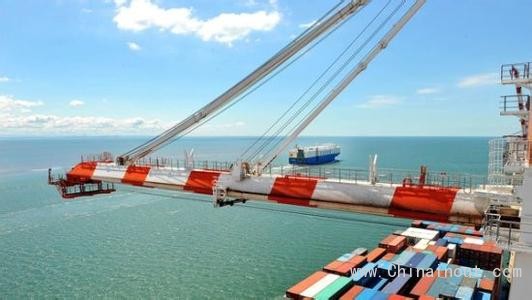
數據顯示,今年上半年,全球貿易遭遇自2008年全球金融危機結束以后最大幅度的萎縮。這些數據將讓人對全球經濟感到擔憂,并使有關全球化是否見頂的辯論變得更加熱烈。
《世界貿易監測》(World Trade Monitor)報告的發布者——荷蘭經濟政策研究局(Netherlands Bureau for Economic Policy Analysis)昨日表示,在截至6月的3個月里,全球貿易額下滑0.5%。該局的經濟學家還將今年第一季度的全球貿易數據下修至萎縮1.5%。因此,今年上半年的全球貿易狀況是自2009年全球貿易因金融危機出現銳減以來最為糟糕的。
根據《世界貿易監測》報告,6月份,全球貿易額實際回升2%,但報告作者警告稱,月度數據具有較大波動性,較長期數據更能說明問題。
這些數據是基于最近幾年全球貿易的慘淡局面,以及一條數十年的規律的逐漸失效——根據這條規律,由于所謂的“超級全球化”時代,全球貿易持續以全球經濟兩倍的速度增長。
根據最新數據,在截至6月底的3個月里,全球貿易額與去年同期相比僅增長1.1%。據國際貨幣基金組織(IMF)預測,全球經濟今年將增長3.5%。
世界貿易組織(WTO)首席經濟學家羅伯特?庫普曼(Robert Koopman)表示:“今年頭6個月的情況糟透了。”該組織預測,今年全球貿易額將增長3.3%,但可能會下調這一估計。
庫普曼表示,今年全球貿易放緩在很大程度上是由歐洲經濟復蘇乏力以及中國經濟放緩造成的。
全球經濟的“增長引擎”好像這一段時間以來發生了機械故障,“一些國家的良好增長被其他國家的疲弱增長抵消”。
除此之外,他表示,全球經濟顯然也在發生結構性調整,這意味著全球貿易放緩可能會持續一段時間。
庫普曼表示,中國正嘗試從以出口為導向的經濟向更多由內需推動的經濟轉型,這對全球貿易產生了結構性影響。美國能源領域的變化也是如此,美國正成為能源凈出口國。同時,在“近岸”甚至“回流”的趨勢中,制造商決定縮短全球供應鏈,將生產基地設在距離本國更近的地區甚至遷回本土,這也對全球貿易產生了結構性影響。
庫普曼表示:“全球經濟正在發生調整,在貿易領域,調整正變得非常明顯。”
最近幾年全球貿易放緩導致一些人聲稱,全球化已見頂,3D打印等科技創新正在造成進一步破壞。
然而,庫普曼表示,盡管全球化可能見頂,但目前沒有跡象表明,全球化趨勢已逆轉。盡管貿易增速已放慢至“與全球GDP增長率相仿”的水平,但作為全球經濟中的一個組成部分,貿易仍保持穩定。以2005年不變價格計算,商品出口仍穩穩占據全球產出的三分之一。(中國進出口網)
World trade recorded its largest contraction since the 2008 global financial crisis in the first half of this year, according to figures that will feed concerns over the global economy and add fuel to a debate over whether globalisation has peaked.
The volume of global trade fell 0.5 per cent in the three months to June, the Netherlands Bureau for Economic Policy Analysis, keepers of the World Trade Monitor, said yesterday. Economists there also revised down their result for the first quarter of the year to a 1.5 per cent contraction, making the first half of 2015 the worst recorded since the 2009 collapse in global trade that followed the crisis.
Global trade actually rebounded by 2 per cent in the month of June, according to the World Trade Monitor, but its authors warned that the monthly numbers were volatile and that the more revealing pattern lay in the longer-term figures.
Those numbers built on what has been a grim pattern for global trade in recent years and the unwinding of a decades-old rule that saw trade reliably grow at twice the rate of the global economy as a result of what some have called an era of hyperglobalisation.
In the three months to the end of June global trade grew just 1.1 per cent from the same quarter of 2014, according to the new figures. The International Monetary Fund expects the global economy to grow 3.5 per cent this year.
“We have had a miserable first six months of 2015,” said Robert Koopman, chief economist of the World Trade Organisation, which has forecast 3.3 per cent growth in the volume of global trade this year but is likely to reduce that estimate.
Much of the slowdown in global trade this year has been caused by a faltering recovery in Europe as well as a slowing economy in China, Mr Koopman said.
The global economy’s “growth engine” had been operating as if it had a mechanical fault for some time with “good growth in some countries offset by weak growth in others”.
But there was also clearly a structural shift happening in the global economy, he said, and that meant slowing global trade was likely to endure for some time.
The attempted shift in China from an export-led economy to one that was more driven by domestic consumption had structural implications for global trade, Mr Koopman said. So too did the changing energy dynamics in the US, which is becoming a net exporter of energy, and a pattern of manufacturers deciding to shorten their global supply chains and bring production closer to home as part of a “nearshoring” and even “reshoring” movement.
“There’s an adjustment going on in the global economy and trade is a place wher that adjustment becomes pretty visible,” Mr Koopman said.
The slowdown in global trade in recent years has led some to proclaim that globalisation has peaked with technological innovations like 3D printing already creating further disruptions.
However, while it may have peaked there are no signs yet that globalisation has gone into reverse, Mr Koopman said. While growth in trade has slowed to “mimic global GDP” it remained stable as a component of the global economy, with merchandise exports accounting for a steady third of global output when measured in constant 2005 prices.











